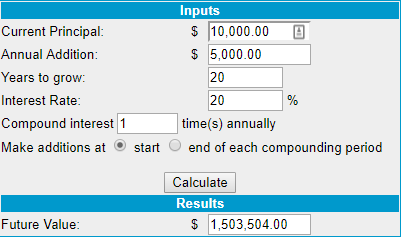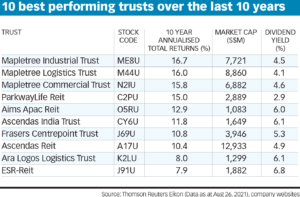
You might be an investor who wants to know if anyone owns stocks. This is important information because it can help you make informed decisions about your investment. To do so, you should learn about the buying and selling of stocks as well as how to prepare for it.
Stock Ownership Search
Normally, when you buy stock from a firm, the company sends you a certificate that identifies the number shares you have and provides other details. Keep these certificates as they are important documents you don't want to lose.
How to prove that you own stock
The easiest and most reliable way to prove stock ownership is by comparing the paperwork signed when the stock was purchased with the records you keep. For many, this can be a difficult task. However, it is important to protect your financial interest.

Try using the company's website to verify if your information matches. If it does, you can use this to establish that you own the stock and have the right to vote on corporate matters.
It is also possible to hire a service that will produce physical copies for you. These companies offer templates or blanks which you can use.
How to find a transfer agent for your stock
A stock ownership certificate is important because it shows you own the stocks that you have purchased. This is a useful tool for collecting dividends that you may be entitled to. It is important to replace the lost certificate as soon as you can.
The transfer agent for a stock is responsible for keeping track of all the records of the shareholders, transferring them to new owners and making sure that they receive any dividends. Select a transfer agent who is registered with SEC and has an excellent reputation. Ask them how long they have been in the business.

In order to get a complete picture of a company's stockholders, you need to know who owns it currently and historically. You can use this information to better understand the stock exchange and the health of the company.
For current stockholders, BamSec offers a search function that allows you to view a list of holders. The tool also allows you to filter by concentration (top 10), location, type of investors and date range.
The same tool also offers "Shareholders History Report" if you're looking for a historical list of owners. The report will give you a list with all the holders, as well their holdings history from 1997 up to today.
FAQ
How can people lose money in the stock market?
The stock market is not a place where you make money by buying low and selling high. You lose money when you buy high and sell low.
The stock market is an arena for people who are willing to take on risks. They will buy stocks at too low prices and then sell them when they feel they are too high.
They hope to gain from the ups and downs of the market. But they need to be careful or they may lose all their investment.
Is stock a security that can be traded?
Stock is an investment vehicle that allows you to buy company shares to make money. This can be done through a brokerage firm that helps you buy stocks and bonds.
You can also invest in mutual funds or individual stocks. There are more mutual fund options than you might think.
These two approaches are different in that you make money differently. With direct investment, you earn income from dividends paid by the company, while with stock trading, you actually trade stocks or bonds in order to profit.
Both of these cases are a purchase of ownership in a business. However, if you own a percentage of a company you are a shareholder. The company's earnings determine how much you get dividends.
With stock trading, you can either short-sell (borrow) a share of stock and hope its price drops below your cost, or you can go long-term and hold onto the shares hoping the value increases.
There are three types for stock trades. They are called, put and exchange-traded. Call and put options let you buy or sell any stock at a predetermined price and within a prescribed time. ETFs are similar to mutual funds, except that they track a group of stocks and not individual securities.
Stock trading is very popular since it allows investors participate in the growth and management of companies without having to manage their day-today operations.
Although stock trading requires a lot of study and planning, it can provide great returns for those who do it well. To pursue this career, you will need to be familiar with the basics in finance, accounting, economics, and other financial concepts.
How are securities traded?
The stock market lets investors purchase shares of companies for cash. Companies issue shares to raise capital by selling them to investors. Investors can then sell these shares back at the company if they feel the company is worth something.
Supply and demand determine the price stocks trade on open markets. The price rises if there is less demand than buyers. If there are more buyers than seller, the prices fall.
There are two ways to trade stocks.
-
Directly from the company
-
Through a broker
Statistics
- US resident who opens a new IBKR Pro individual or joint account receives a 0.25% rate reduction on margin loans. (nerdwallet.com)
- Even if you find talent for trading stocks, allocating more than 10% of your portfolio to an individual stock can expose your savings to too much volatility. (nerdwallet.com)
- Ratchet down that 10% if you don't yet have a healthy emergency fund and 10% to 15% of your income funneled into a retirement savings account. (nerdwallet.com)
- For instance, an individual or entity that owns 100,000 shares of a company with one million outstanding shares would have a 10% ownership stake. (investopedia.com)
External Links
How To
How to trade in the Stock Market
Stock trading can be described as the buying and selling of stocks, bonds or commodities, currency, derivatives, or other assets. Trading is French for "trading", which means someone who buys or sells. Traders trade securities to make money. They do this by buying and selling them. It is one of the oldest forms of financial investment.
There are many different ways to invest on the stock market. There are three main types of investing: active, passive, and hybrid. Passive investors only watch their investments grow. Actively traded investors seek out winning companies and make money from them. Hybrid investor combine these two approaches.
Passive investing involves index funds that track broad indicators such as the Dow Jones Industrial Average and S&P 500. This approach is very popular because it allows you to reap the benefits of diversification without having to deal directly with the risk involved. You just sit back and let your investments work for you.
Active investing is the act of picking companies to invest in and then analyzing their performance. Active investors will analyze things like earnings growth rates, return on equity and debt ratios. They also consider cash flow, book, dividend payouts, management teams, share price history, as well as the potential for future growth. They then decide whether they will buy shares or not. They will purchase shares if they believe the company is undervalued and wait for the price to rise. However, if they feel that the company is too valuable, they will wait for it to drop before they buy stock.
Hybrid investing blends elements of both active and passive investing. You might choose a fund that tracks multiple stocks but also wish to pick several companies. This would mean that you would split your portfolio between a passively managed and active fund.